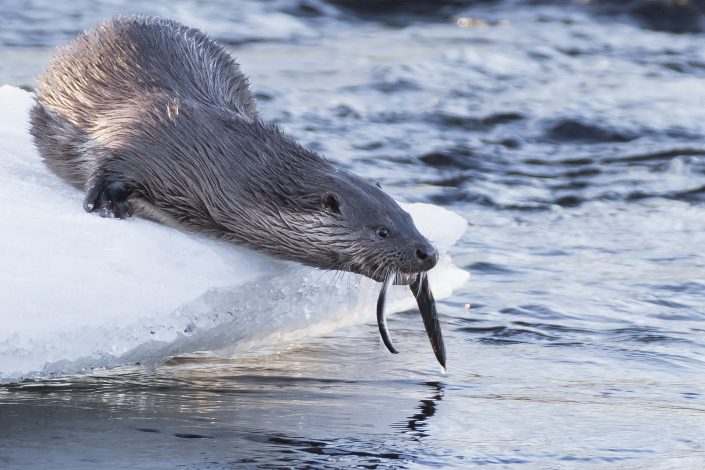This post is also available in: Swedish
European river lamprey – Lampetra fluviatilis
European river lamprey – Lampetra fluviatilis
Adult river lampreys measure from 25 to 40 cm (10 to 16 in) for the sea-going forms and up to 28 cm (11 in) for the lake forms. The very elongate body is a uniform dark grey above, lightening to yellowish off-white on the sides and pure white below. Like all lampreys, these fish lack paired fins and possess a circular sucking disc instead of jaws. They have a single nostril and seven small breathing holes on either side behind the eye. The teeth are sharp and these fish can be told from the rather smaller brook lamprey (Lampetra planeri) by the fact that the two dorsal fins are more widely separated.
The European river lamprey has a reproduction cycle similar to that of salmon. River lampreys migrate upstream from the sea to spawning grounds in autumn and winter Spawning activity is greatest in the springtime (like the brook lamprey) and after spawning, the adults die. The young larvae, known as ammocoetes, spend several years in soft sediment before migrating to the sea as adults. It is thought that these fish spend two to three years in marine habitats before making the return trip to spawn.









